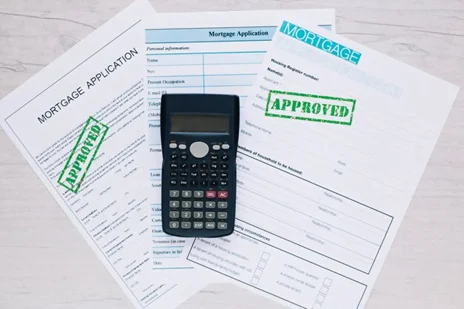
Filling out tax forms can be a daunting task, but it doesn’t have to be. In this article, we’ll walk you through the IRS Form 1310 and explain how to fill out each line correctly.
What is IRS Form 1310?
IRS Form 1310, also known as the “Statement of Person Claiming Refund Due a Deceased Taxpayer,” is used by the executor, administrator, or legal representative of a deceased taxpayer to claim a refund on their behalf. The form is used to notify the IRS that a taxpayer has passed away and that someone else is claiming their refund.
When is IRS Form 1310 required?
IRS Form 1310 is required if:
- The taxpayer passed away before filing their tax return, and a refund is due to them.
- The taxpayer passed away after filing their tax return, and a refund is due to them.
How to fill out IRS Form 1310?
IRS Form 1310 consists of 13 lines, and we’ll go through each line one by one to help you fill out the form correctly.
Line 1: Name of Deceased Taxpayer
Enter the name of the deceased taxpayer in the space provided.
Line 2: Taxpayer Identification Number (TIN) of Deceased Taxpayer
Enter the TIN of the deceased taxpayer in the space provided. The TIN is usually the deceased taxpayer’s Social Security number.
Line 3: Name of the person claiming the refund
Enter the name of the person claiming the refund on behalf of the deceased taxpayer. This could be the executor, administrator, or legal representative of the deceased taxpayer’s estate.
Line 4: Relationship to the Deceased Taxpayer
Enter the relationship of the person claiming the refund to the deceased taxpayer. This could be the executor, administrator, or legal representative of the deceased taxpayer’s estate.
Line 5: Address of person claiming the refund
Enter the address of the person claiming the refund on behalf of the deceased taxpayer.
Line 6: City, State, and ZIP code of the person claiming the refund
Enter the city, state, and ZIP code of the person claiming the refund on behalf of the deceased taxpayer.
Line 7: Daytime Telephone Number
Enter the daytime telephone number of the person claiming the refund on behalf of the deceased taxpayer.
Line 8: Decedent’s Date of Death
Enter the date of death of the taxpayer in the space provided. This is the date on which the taxpayer passed away.
Line 9: Tax Year of the Refund Being Claimed
Enter the tax year for which the refund is being claimed. This is usually the tax year in which the taxpayer passed away.
Line 10: Amount of Refund Being Claimed
Enter the amount of the refund being claimed in the space provided. This is the amount that the deceased taxpayer would have been entitled to receive if they were still alive.
Line 11: Basis for Claiming the Refund
Check the box that best describes the basis for claiming the refund. There are three options:
- The taxpayer was a resident of the United States.
- The taxpayer was a nonresident alien.
- The taxpayer was a dual-status alien.
Line 12: Sign and Date the Form
The person claiming the refund must sign and date the form in the spaces provided.
Line 13: Supporting Documentation
Attach any supporting documentation to the form that is required to claim the refund. This could include a copy of the deceased taxpayer’s death certificate, a copy of their will, or any other documentation that supports the claim.
Tips for Filling out IRS Form 1310

- Gather all necessary information and documentation before starting to fill out the form. This includes the name and TIN of the deceased taxpayer, the date of death, and any supporting documentation required to claim the refund.
- Be sure to enter all information accurately and double-check it before submitting the form. Incorrect or incomplete information can delay the processing of the refund.
- Make sure to sign and date the form in the spaces provided. Failure to sign the form can result in a delay or rejection of the claim.
- If you’re unsure about how to fill out any of the lines, don’t hesitate to seek guidance from a tax professional or the IRS. It’s better to take the time to ensure that the form is filled out correctly than to risk making a mistake.
- Keep a copy of the completed form and any supporting documentation for your records. This will come in handy if you need to reference the information in the future or if there are any issues with the processing of the refund.
In conclusion
Filling out IRS Form 1310 can be a complex process, but it’s important to ensure that the form is filled out correctly to claim a refund on behalf of a deceased taxpayer. By following the steps outlined in this article and seeking guidance if needed, you can ensure that the form is filled out accurately and submitted on time.
Remember to keep copies of the form and any supporting documentation for your records. By doing so, you’ll have a record of the refund claim and can easily reference the information in the future if needed.
It’s also important to note that the processing time for refund claims on behalf of deceased taxpayers can take longer than usual. This is due to the need to verify the information and ensure that the refund is being claimed by the appropriate person. As such, it’s important to be patient and to follow up with the IRS if you haven’t heard back about the refund claim after a reasonable amount of time has passed.
Finally, if you’re unsure about how to fill out the form or have any questions about the process, it’s always a good idea to seek guidance from a tax professional or the IRS. They can provide you with the information and support you need to ensure that the form is filled out correctly and that the refund claim is processed as quickly as possible.
Read more about YouTube Monetization Taxation
FAQ
IRS Form 1310 is the Statement of Person Claiming Refund Due a Deceased Taxpayer. It is used to claim a refund on behalf of a deceased taxpayer.
The form must be filled out correctly to avoid any delays or rejections. The website https://taxtaxation.com/how-to-fill-out-the-irs-form-1310-lines-correctly/ provides detailed instructions on how to fill out the form correctly. The instructions cover each line on the form and explain what information is required.
It is not necessary to attach any supporting documents with the form. However, if the deceased taxpayer had a will or other legal documents, it may be helpful to include copies of those documents.
The person who is responsible for handling the deceased taxpayer’s affairs, such as an executor, administrator, or other legal representative, should fill out the form.
The form requires information such as the deceased taxpayer’s name, social security number, date of death, and the name and address of the person claiming the refund.


